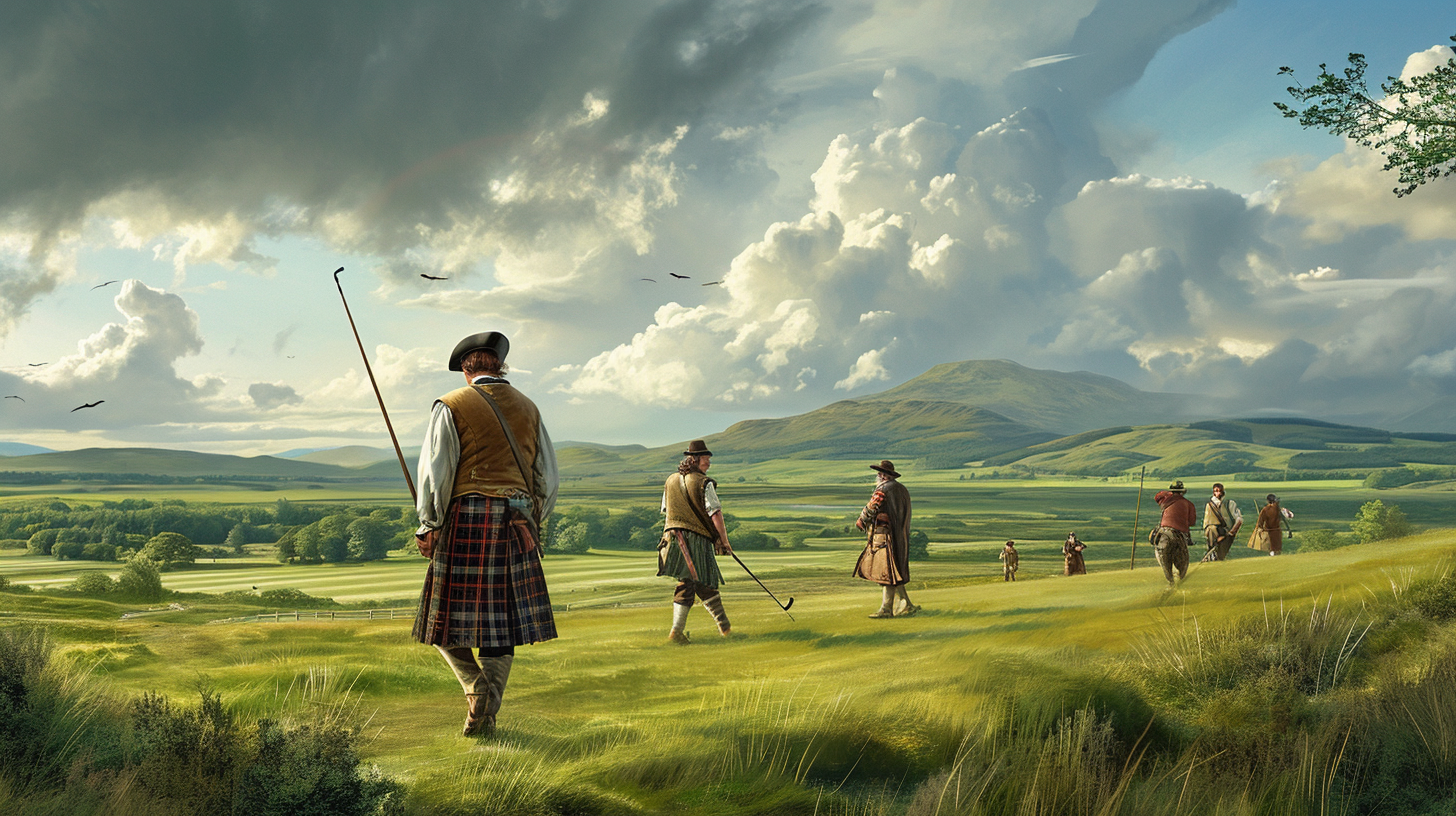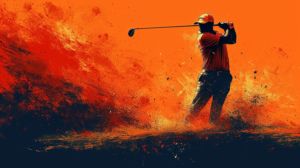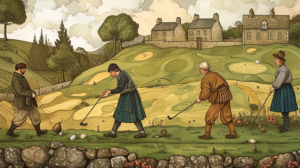The sound of a cracking drive splitting fairways is as Scottish as tartan, but who first picked up a primitive club to strike balls across linkslands and invariably invented golf?
Golf originated from 15th century Scotland, where early forms of the game played along the east coast rapidly evolved into a pastime for kings and commoners alike.
While no single inventor is responsible, ancient stick-and-ball games played in Europe and China laid the foundation.
Let’s dive into the fascinating history and evolution of golf in Scotland, from the early kings who banned and loved the game to the standardization of early rules that kicked off golf’s journey to becoming the global sport we know and love today!
Who Invented Golf?
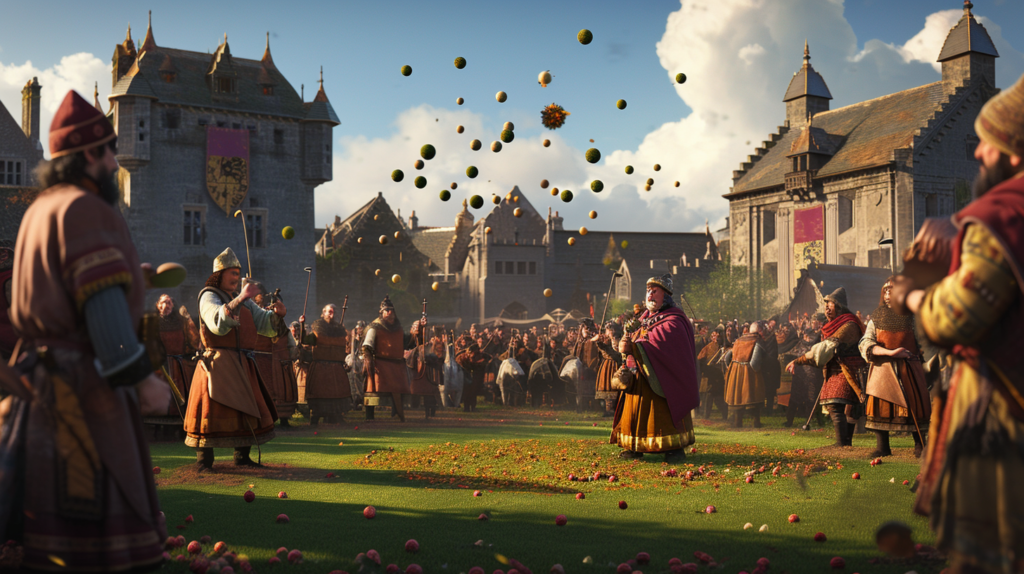
Given the organic evolution of early forms of golf amongst different groups in Scotland through the 15th and 16th centuries, it is difficult to credit any single person as the unique inventor of golf as we know it today.
It emerged through an aggregation of contributions rather than any lone spark of genius like some other famous inventions in history.
However, a few key historical figures deserve mention for the pivotal roles they played in pioneering early golf. King James II, for his banning of golf in 1457 indicating it was already popular by then.
King James IV for embracing and promoting golf amongst the Scottish nobility in the early 16th century. Archbishop John Hamilton, the first cited golfer in history for watching boys striking balls into holes for fun.
Then the founders of the Honourable Company of Edinburgh Golfers in 1744 for building the first purpose-built golf course at Leith Links and standardizing aspects of the game through an official rulebook.
Origins of Golf
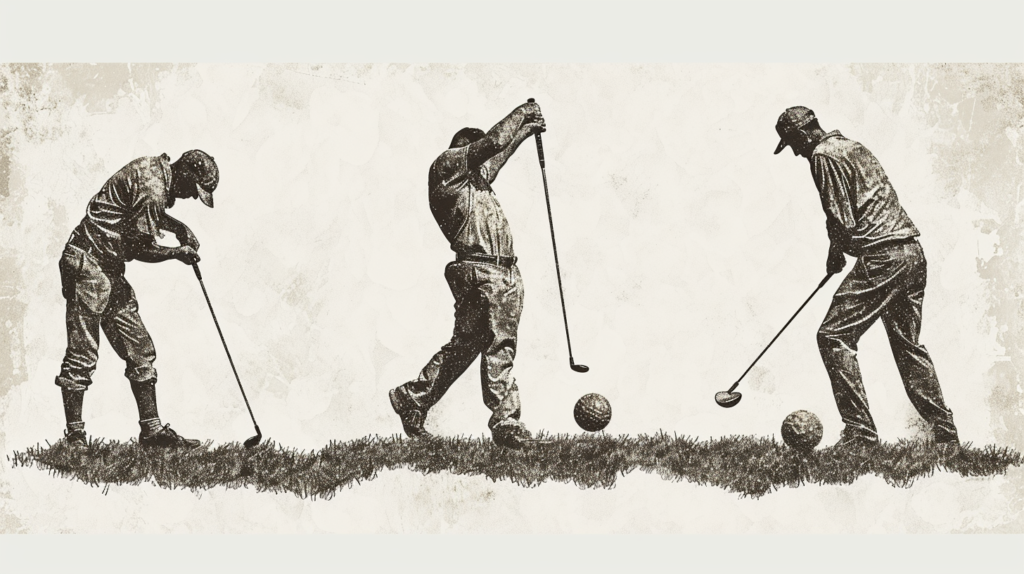
Golf has ancient origins, with games played using sticks and balls being traced back to the medieval ages in certain parts of Europe as well as in China.
The modern game of golf as it is played nowadays emerged in 15th century Scotland, where early forms of the game evolved rapidly into a popular pastime for royalty and commoners alike.
There are several early historical references to games resembling golf being played in records and literary works in Scotland.
The first ever documented mention of the game of golf is found in Edinburgh on 6th March 1457, when King James II of Scotland banned the playing of golf and football as they were interfering with his subjects’ military training through archery practice.
This suggests golf was played in Scotland well before 1457. In 1502, the Treasurer’s accounts for King James IV of Scotland include payments for golf clubs and balls.
Meanwhile, the famous poem “The Marriage of Robin Redbreast and the Wren” by William Dunbar, which was written between 1460 and 1520, mentions golf clubs kept within King James IV’s chamber.
The Evolution of Golf in Scotland
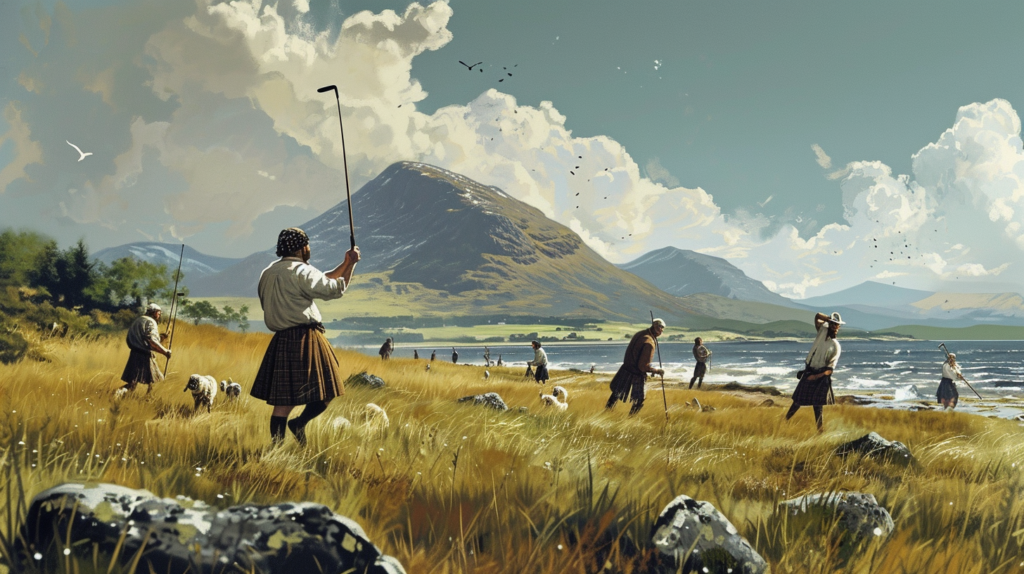
Golf began as a game played in the linksland areas along Scotland’s east coast. The topography of the linkslands, largely flat with few trees but plenty of natural hazards like dunes and rough grasses, lent itself well to playing golf.
The game likely started from bored shepherds hitting rocks across the linkslands with their crooks, before evolving into using primitive clubs to strike balls made of wood or leather into holes scratched into the ground.
Golf quickly became popular as a pastime that could be enjoyed by Scottish kings, nobles and commoners alike when taking leisure time away from work or military training.
There are records showing Scottish monarchs regularly playing golf from the 15th century onwards, highlighting its popularity amongst royalty. King James IV reportedly enjoyed the game even when the weather was severely cold, if contemporary accounts are to be believed.
Mary, Queen of Scots was known to have played golf shortly after her return to Scotland in 1561, as evidenced by accounts noting payments for new golf equipment like clubs and balls by her attendants. Clearly golf had permeated Scottish high society by the mid 16th century.
Identifying the First Golfers

While it is difficult to accurately identify who exactly the first golfer in history was, there are a few likely candidates that emerge from early historical records in Scotland.
As golf evolved from the game of hitting rocks across linkslands into using clubs to strike primitive golf balls, certainly someone must have been the first to do so with a club instead of a shepherd’s crook.
But they remain unnamed and possibly unimportant peasants who unwittingly contributed to the origins of modern golf just through their leisure.
Given golf’s early popularity documented amongst Scottish royalty, it is unsurprising to find that the earliest historical figures associated with playing early forms of golf tended to be nobles or other elites rather than commoners.
As noted earlier, the ban on golf by King James II of Scotland in 1457 provides evidence that Scottish elites were playing the game by at least the mid 15th century.
In his neutral poetry written between 1530-1573, Sir David Lindsay refers to Archbishop John Hamilton of Scotland seeing boys practising “sleynge of baullis into holes” which likely refers to the playing of golf.
The Honourable Company of Edinburgh Golfers
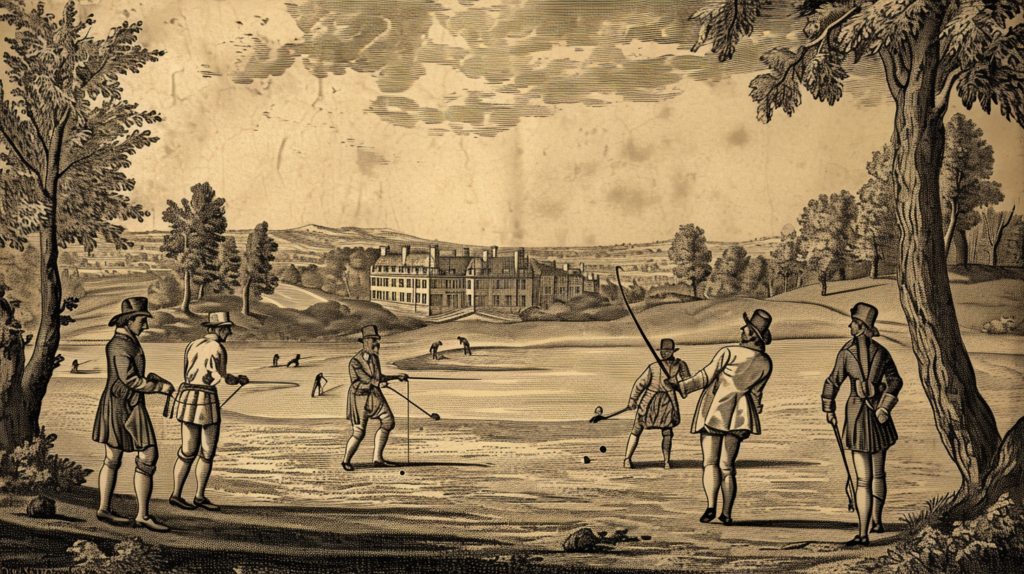
In 1744, an organisation named the Honourable Company of Edinburgh Golfers was formed by a group of men from Edinburgh, Leith and their surrounding areas.
They would soon after lease a stretch of land in Leith Links from the Edinburgh City Council to establish a more permanent golf course with holes compared to the rather transient nature of golfing in the open linkslands used by golfers hitherto.
This represents the first ever purpose-built golf course that introduced a degree of standardization.
Some of the key early members of the Company notably include advocate John Rattray, who served as the Captain from 1744-1758, as well as Edinburgh merchant Captain John Campbell, who later held the post too.
Other early members were local gentry, lawyers and businessmen who were able to pay the relatively expensive dues required for access to the Company’s golf course at Leith Links.
The Company also purchased silver golf cups for competition that survive today as collectible golfing artefacts from the period.
In addition to building a permanent golf course, the Honourable Company of Edinburgh Golfers also established a formal set of written Rules that standardized particular aspects of golf for the first time ever to suit the new course at Leith Links.
This included standard lengths for golf courses, hole and tee areas, as well as the associating rulebook on golf equipment specifications and proper golfing etiquette to follow.
The spread of golf to England from Scotland later in the century saw these early rules adopted more widely too.
Standardizing the Rules
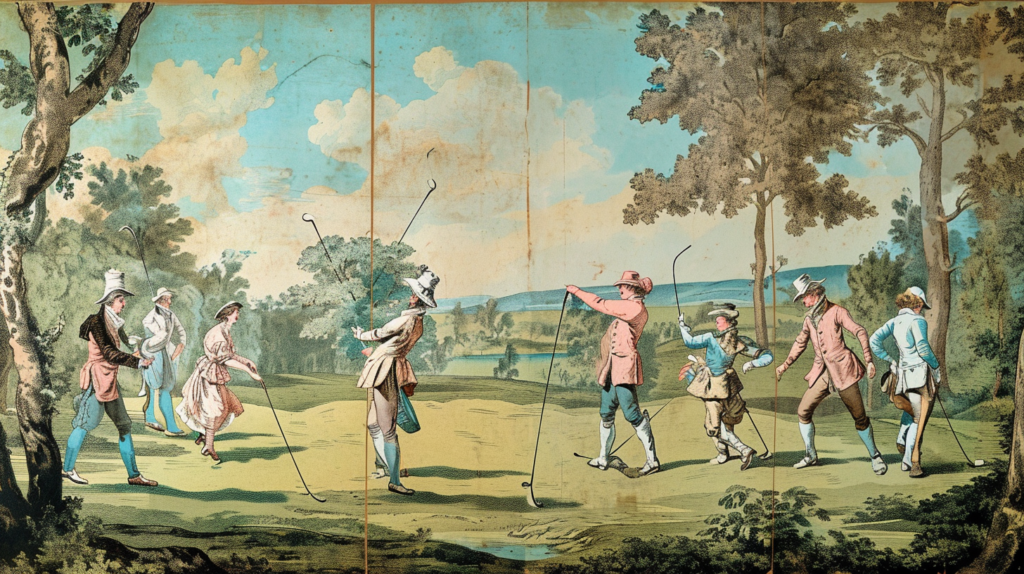
While golf originated uniquely in Scotland without formal rules for much of its early history, the establishment of more permanent golf courses required some standardization of rules to suit these spaces.
The first ever known Rules of golf numbering 13 were drawn up by Noblemen and Gentlemen Golfers golf clubs in 1744. Just over a decade later, in 1759 the St Andrews Golf Club published a revised standardized set of 18 rules for the playing of golf.
Subsequent editions of standard rules were adopted globally as golf spread internationally from Scotland.
The Rules introduced in the mid 18th century reflected some of the early concerns surrounding safety, integrity and maintaining a good pace of play on increasingly crowded golf courses.
This includes Rules about assisting other players in hitting balls, thereby reducing the risk of dangerous swings. Other Rules focused on playing golf balls from where they lie to avoid cheating.
Some Rules also covered preferences on who can play first when golfers are within distance, as well as allowing golfers playing faster the right to pass to maintain pace.
Over the next centuries, the Rules of golf continued evolving to reflect the changing nature of a game that was fast transitioning from a pastime for elites to a more professionalized competitive sport involving diverse participants from around the world.
Additional rules surrounding golf club and ball specifications were also introduced as the technology advanced significantly.
While the essence of the game hitting a ball across an outdoor course into a hole has stayed consistent, tournaments now test both physical skill and comprehensive knowledge of golf rules.
Conclusion
While pinpointing the exact individual responsible for inventing golf is likely impossible given its evolution from ancient stick-and-ball games.
What is clear is that Scotland provided the nurturing backdrop that allowed golf to take shape into the globally beloved sport we know today.
From the rolling linkslands along the coastlines to the royal figures and commoners who shaped early forms of play and rules, Scotland deserves the lion’s share of credit as the true Home of Golf.
Wherever this addicting game takes you, spare a thought for temperamental old Scotland next time you grip your trusty clubs.
